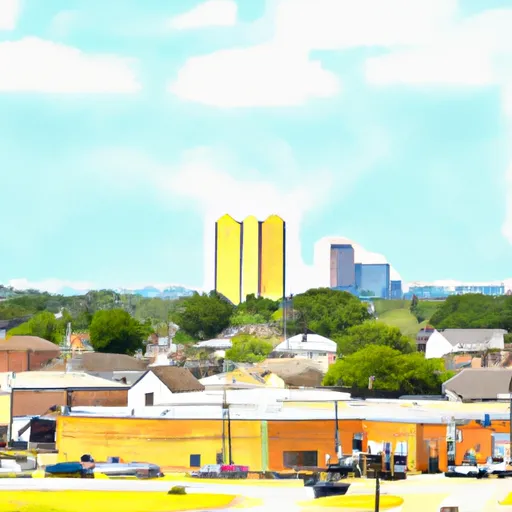-
 Snoflo Premium
Snoflo Premium
Get unlimited access to all our content
With no Ad interruptions! - Start Your Free Trial Login with existing account
Waller
Eden Index
Climate
8.1
•
Recreation
2.8
•
Community
2.7
•
Safeguard
4.9/10

Waller, Texas, located in Waller County, offers a diverse climate with hot summers and mild winters. Summers are typically hot and humid, with average temperatures reaching the mid to high 90s°F (mid 30s°C). Winters are mild, with average temperatures ranging from the 40s°F (4-9°C) during the day to the 30s°F (0-4°C) at night. Rainfall is evenly distributed throughout the year, with an annual average of around 45 inches (114 cm). The area occasionally experiences severe weather, including thunderstorms and the possibility of hurricanes.
Waller is home to various hydrology constituents, including rivers, creeks, and lakes. The Brazos River, which runs along the eastern border of Waller County, offers opportunities for boating, fishing, and water sports. Additionally, Cypress Creek, which flows through the county, provides scenic areas for kayaking, canoeing, and wildlife observation.
Outdoor enthusiasts can also enjoy the numerous recreational opportunities available in Waller. The county boasts several parks, nature trails, and camping grounds, providing opportunities for hiking, biking, picnicking, and camping. With its diverse climate and abundant natural resources, Waller, Texas, offers a range of outdoor activities for individuals seeking to enjoy the beauty and recreational opportunities that the area has to offer.
What is the Eden Index?
The Snoflo Eden Index serves as a comprehensive rating system for regions, evaluating their desirability through a holistic assessment of climate health, outdoor recreation opportunities, and natural disaster risk, acknowledging the profound impact of these factors on livability and well-being.
Climate Health Indicator (CHI): 8.1
Waller receives approximately
1086mm of rain per year,
with humidity levels near 83%
and air temperatures averaging around
20°C.
Waller has a plant hardyness factor of
8, meaning
plants and agriculture in this region tend to thrive here all year round.
By considering the ideal temperature range, reliable water supplies, clean air, and stable seasonal rain or snowpacks, the Climate Health Indicator (CHI) underscores the significance of a healthy climate as the foundation for quality living.
A healthy climate is paramount for ensuring a high quality of life and livability in a region, fostering both physical well-being and environmental harmony. This can be characterized by ideal temperatures, reliable access to water supplies, clean air, and consistent seasonal rain or snowpacks.
Weather Forecast
Streamflow Conditions
San Jacinto
Area Rivers
San Jacinto
Snowpack Depths
San Jacinto
Reservoir Storage Capacity
San Jacinto
Groundwater Levels
Recreational Opportunity Index (ROI): 2.8
The Recreational Opportunity Index (ROI) recognizes the value of outdoor recreational options, such as parks, hiking trails, camping sites, and fishing spots, while acknowledging that climate plays a pivotal role in ensuring the comfort and consistency of these experiences.
Access to outdoor recreational opportunities, encompassing activities such as parks, hiking, camping, and fishing, is crucial for overall well-being, and the climate plays a pivotal role in enabling and enhancing these experiences, ensuring that individuals can engage in nature-based activities comfortably and consistently.
Camping Areas
| Campground | Campsites | Reservations | Toilets | Showers | Elevation |
|---|---|---|---|---|---|
| Hollywood Bottom Park | None | 74 ft | |||
| Riverside Park - Bay City | 40 | 34 ft | |||
| Navasota RV Park | 10 | 221 ft | |||
| Stephen Austin State Park | 78 | 135 ft | |||
| FM 521 River Park | None | 20 ft | |||
| Fairfield Lake State Park | 135 | 382 ft | |||
| Gibbons Creek Reservoir | 27 | 255 ft |
Nearby Fishing
Nearby Ski Areas
Catastrophe Safeguard Index (CSI):
The Catastrophe Safeguard Index (CSI) recognizes that natural disaster risk, encompassing floods, fires, hurricanes, and tornadoes, can drastically affect safety and the overall appeal of an area.
The level of natural disaster risk in a region significantly affects safety and the overall livability, with climate change amplifying these risks by potentially increasing the frequency and intensity of events like floods, fires, hurricanes, and tornadoes, thereby posing substantial challenges to community resilience and well-being.
Community Resilience Indicator (CRI): 2.7
The Community Resilience Indicator (CRI) recognizes that education, healthcare, and socioeconomics are crucial to the well-being of a region. The CRI acknowledges the profound impact of these elements on residents' overall quality of life. By evaluating educational resources, healthcare accessibility, and economic inclusivity, the index captures the essential aspects that contribute to a thriving community, fostering resident satisfaction, equity, and social cohesion.

